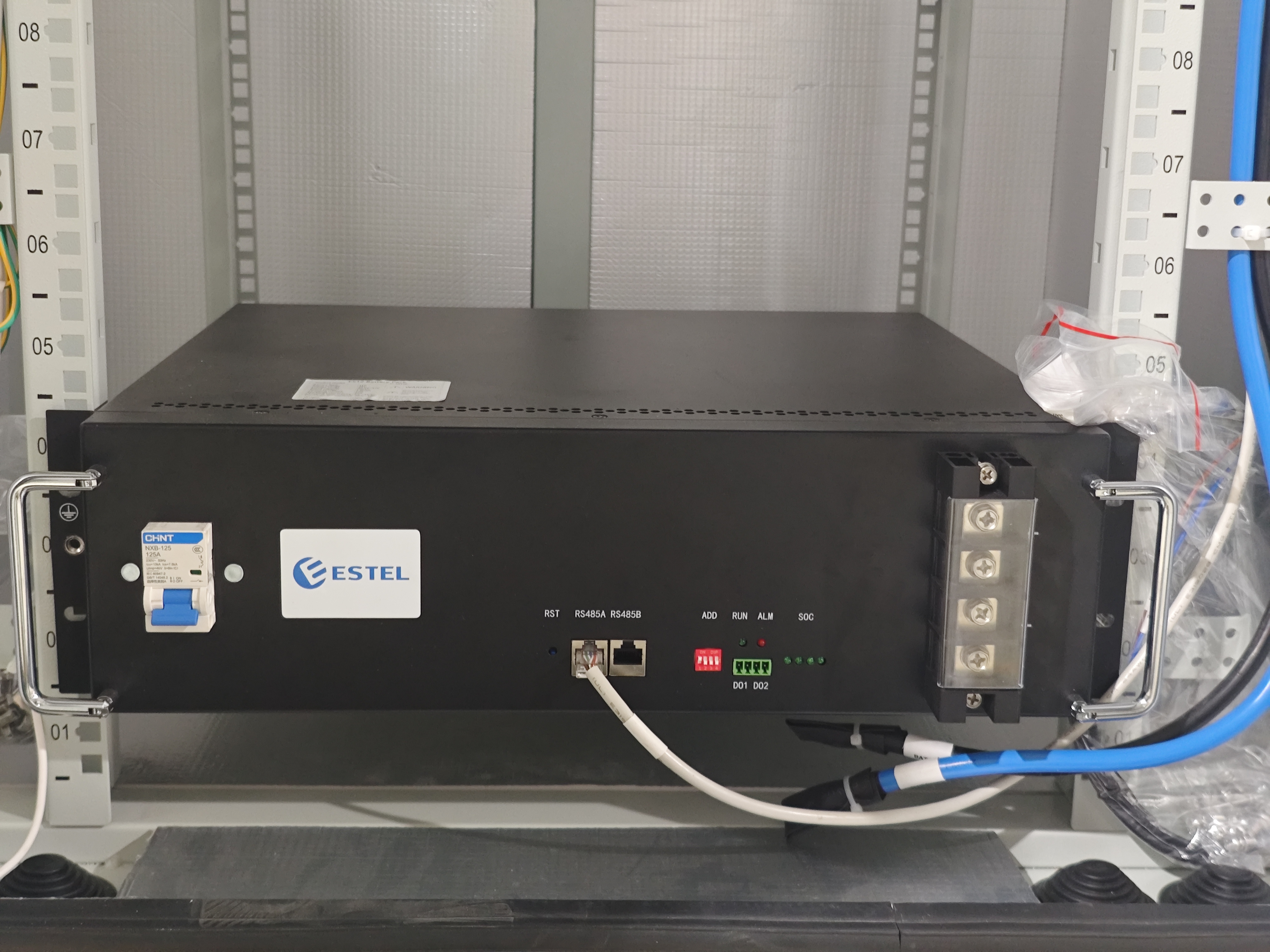Analyzing ESTEL Telecom Battery Systems in Energy Storage 2025

Telecom battery systems serve as the backbone of modern energy storage systems, ensuring reliable power delivery even under challenging conditions. By 2025, ESTEL telecom batteries will redefine energy storage with enhanced safety and fault detection technologies. For instance, the BESS Failure Incident Database highlights a remarkable 98% reduction in battery failure rates from 2018 to 2024, proving the effectiveness of these innovations.
A study of over 2,000 blackout events across U.S. cities revealed that grids integrating wind and solar technologies show greater resilience during extreme weather. This underscores the role of telecom batteries in stabilizing grids and facilitating renewable energy adoption.
With telecom batteries, you can expect improved energy availability, which is essential as the world transitions to a renewable energy future.
Key Takeaways
Telecom batteries provide steady power during blackouts, helping important services like communication and emergencies.
Using better battery technology saves energy and lowers telecom costs.
These batteries help use renewable energy by storing extra wind or solar power.
Recycling batteries the right way can protect the environment and reuse useful materials.
Future telecom batteries may use solid-state tech for safer and stronger energy storage.
Understanding Telecom Battery Systems
Defining Telecom Batteries and Their Applications
Telecom batteries are specialized energy storage devices designed to support telecom infrastructure. These batteries ensure uninterrupted communication during power outages, allowing businesses and emergency services to operate without disruption. They also play a vital role in integrating renewable energy sources, storing excess energy for consistent supply.
You’ll find telecom batteries in applications ranging from remote cell towers to data centers. For instance:
Remote Cell Towers: Solar panels combined with battery storage systems reduce reliance on diesel generators.
Data Centers: Battery energy storage systems (BESS) optimize energy consumption and ensure operations during outages.
5G Networks: Telecom batteries manage increased energy demands and store excess energy to maintain seamless operations.
These applications highlight the versatility of telecom batteries in supporting critical infrastructure and promoting sustainability.
The Role of Telecom Batteries in Energy Storage Systems
Telecom batteries are integral to modern energy storage systems. They balance supply and demand, enhancing grid stability and efficiency. For example, BESS enables peak shaving, reducing energy costs while ensuring reliable power delivery.
A closer look at technical studies reveals their importance:
Application/Benefit | Description |
|---|---|
Uninterrupted Communication | Ensures reliable network operation during power outages. |
Support for Critical Infrastructure | Plays a crucial role in emergency services and disaster response efforts. |
Integration with Renewable Energy | Stores excess renewable energy, balancing supply and demand. |
Environmental Sustainability | Industry stakeholders focus on responsible disposal and recycling. |
Telecom batteries also support hybrid renewable energy systems, combining wind, solar, and fuel cells to reduce operational costs and environmental impact. This makes them indispensable for energy storage solutions in the telecom sector.
ESTEL’s Leadership in Telecom Battery Technology
ESTEL has emerged as a leader in telecom battery technology by prioritizing innovation and reliability. The company’s advanced monitoring systems provide real-time data on performance metrics like voltage and temperature. These systems ensure uninterrupted operations even in challenging conditions.
Key performance metrics that set ESTEL apart include:
Performance Metric | Description |
|---|---|
Advanced Monitoring Systems | Tracks metrics like voltage and temperature in real-time. |
Reduces energy costs and supports sustainable operations. | |
Reliability in Challenging Conditions | Maintains performance even in adverse environments. |
ESTEL’s focus on energy-efficient rectifiers and robust battery storage solutions has positioned it as a pioneer in the industry. By addressing the growing energy demands of 5G networks and telecom infrastructure, ESTEL continues to lead the way in battery technology innovation.
Technological Advancements in Telecom Batteries

Lithium-Ion Batteries in Modern Telecom Applications
Lithium-ion batteries have revolutionized telecom applications by offering lightweight and compact energy storage solutions. These batteries are essential for powering small cell sites and data centers, especially with the expansion of 5G networks. Their high energy density ensures efficient power backup, reducing the need for bulky systems.
You’ll notice their impact in several areas:
They enhance energy efficiency in telecom systems, meeting the growing demand for reliable connectivity.
AI integration in battery management systems optimizes battery lifecycle and enables predictive maintenance.
Sustainable manufacturing practices, such as using eco-friendly materials and recycling systems, are becoming standard.
The market for lithium-ion batteries in telecom continues to grow steadily. This growth reflects the increasing demand for energy-dense solutions that support modern telecom infrastructure.
Solid-State Batteries and Their Potential Impact
Solid-state batteries represent the next frontier in telecom battery technology. Unlike lithium-ion batteries, they use solid electrolytes, which improve safety and energy density. These batteries are less prone to overheating, making them ideal for critical telecom applications.
Their potential impact includes:
Higher energy density, allowing for longer backup times and smaller battery sizes.
Enhanced safety features, reducing risks associated with thermal runaway.
Greater longevity, minimizing replacement costs and downtime.
Solid-state batteries could redefine energy storage in telecom systems. As the technology matures, you can expect these batteries to play a pivotal role in supporting renewable energy integration and grid stability.
ESTEL’s Innovations in Battery Storage Efficiency
ESTEL has set new benchmarks in battery storage efficiency through its advanced technologies. The company’s Delta rectifier modules achieve peak efficiency ratings consistently above 95%, ensuring reliable power delivery under varying load conditions.
Key performance metrics include:
Metric | Value |
|---|---|
Peak Efficiency | 97.83% |
Voltage for Peak Efficiency | 277 VAC |
Full Load Efficiency (min) | Above target |
These modules feature intelligent load balancing and fault-tolerant designs, making them suitable for industrial and renewable energy applications. ESTEL’s focus on optimizing power delivery and reducing energy waste highlights its commitment to innovation in battery technology.
Additionally, integrating hydrogen technologies with battery systems has reduced capacity requirements by up to 77%. This approach raises the minimum state-of-charge to over 81.5%, significantly improving efficiency. By decreasing renewable energy waste by up to 79%, ESTEL demonstrates its leadership in sustainable energy solutions.
Benefits of Telecom Batteries in Energy Storage Systems
Ensuring Grid Stability and Reliable Power Supply
Telecom batteries play a vital role in ensuring grid stability and providing reliable power supply during outages. You’ll find their importance highlighted in hybrid systems that combine battery energy storage systems (BESS) with solar PV and utility grids. These configurations deliver uninterrupted power supply, even in challenging conditions. For base transceiver stations (BTS), telecom batteries act as backup power resources, maintaining operations when the grid fails.
Battery storage also supports renewable generation paired with storage, balancing energy supply and demand. This integration reduces the risk of power disruptions and enhances reliability. By stabilizing energy storage and usage, telecom batteries ensure consistent performance for critical infrastructure like communication networks and emergency services.
Cost-Effective Solutions for Energy Storage
Telecom batteries offer cost-effective solutions for energy storage systems by optimizing long-term expenses. Lithium-ion batteries, for instance, provide higher power densities and longer lifespans compared to traditional options. Their faster recharge times and lower Total Cost of Ownership (TCO) make them ideal for telecom applications.
Here’s how different battery technologies compare:
Lead-acid batteries have lower upfront costs but require frequent maintenance, increasing long-term expenses.
Lithium-ion batteries, while initially more expensive, reduce maintenance needs and downtime costs, saving money over time.
Flow batteries excel in scalability and energy efficiency, making them suitable for large-scale applications.
By choosing the right battery technology, you can achieve energy efficiency and reduce operational costs while ensuring reliable backup power systems.
Supporting Renewable Energy Integration with BESS
Telecom batteries are essential for renewable energy integration, especially when paired with BESS. These systems store excess energy generated by renewable sources like wind and solar, ensuring consistent supply during periods of low generation. This capability supports the transition to cleaner energy while reducing reliance on fossil fuels.
Battery backup infrastructure also enhances energy efficiency by minimizing waste and optimizing storage capacity. For example, lithium-ion batteries store renewable energy effectively, enabling seamless integration with telecom networks. This combination promotes sustainability and reliability, making telecom batteries a cornerstone of renewable energy adoption.
📌 Tip: Investing in advanced battery technology not only supports renewable energy but also ensures uninterrupted power supply for critical telecom operations.
Challenges in Telecom Battery Systems
Addressing Sustainability and Environmental Concerns
Telecom batteries play a crucial role in supporting renewable energy, but their environmental impact cannot be ignored. The telecom industry consumes about 164 terawatt hours annually, contributing to 110.7 million tons of CO2 emissions—equivalent to the emissions of 29 million cars. This highlights the urgent need for sustainable practices in telecom battery systems.
Improper disposal of batteries leads to pollution and resource wastage. Throwing away batteries without proper recycling increases environmental costs. Sustainable battery management practices, such as using eco-friendly materials and improving recycling processes, can mitigate these issues.
You can also explore innovative recycling methods like hydrometallurgical processing, which extracts valuable metals using chemical reagents, or pyrometallurgical processing, which produces mixed metal alloys. These approaches reduce waste and recover critical materials, supporting a circular economy in battery storage.
Recycling and Disposal of Telecom Batteries
Recycling telecom batteries is essential for minimizing environmental harm and conserving resources. Many batteries contain valuable metals like lithium, cobalt, and nickel, which can be recovered through advanced recycling techniques. However, the high energy requirements of some processes, such as pyrometallurgical recycling, pose challenges.
Hydrometallurgical methods offer a more sustainable alternative. They use chemical reactions to extract battery-grade metal salts, which can be reused in new batteries. By adopting these methods, you can reduce the environmental footprint of telecom batteries and support renewable energy goals.
Raising awareness about proper disposal methods is equally important. Educating stakeholders about the hidden costs of improper disposal can drive better recycling practices. This ensures that telecom batteries contribute to sustainability rather than becoming a source of pollution.
Overcoming Energy Density and Longevity Limitations
The rapid expansion of global telecommunications infrastructure and the rise of 5G technology demand batteries with higher energy density and longer lifespans. Recent advancements in lithium-ion and VRLA batteries address these needs. For example, VRLA batteries are increasingly used in data centers due to their reliability and ability to ensure uninterrupted operations during a power outage event.
Digital twin technology is revolutionizing battery management. By integrating real-world data with predictive modeling, you can better understand battery degradation and optimize performance. This leads to higher capacities and extended lifetimes, making telecom batteries more efficient and cost-effective.
These innovations are critical for supporting renewable energy integration. Enhanced energy density allows telecom batteries to store more renewable energy, while improved longevity reduces the need for frequent replacements. Together, these advancements ensure that telecom battery systems remain reliable and sustainable.
Future Trends in Telecom Batteries and Energy Storage

The Role of Telecom Batteries in Distributed Energy Systems
Telecom batteries are becoming a cornerstone of distributed energy systems. These systems rely on decentralized energy generation and storage to improve efficiency and reduce reliance on centralized grids. By using telecom batteries, you can store renewable energy locally and ensure a steady power supply for telecom infrastructure. This approach enhances grid resilience and supports the growing demand for renewable energy.
For example, battery energy storage systems (BESS) integrated with solar panels at remote telecom sites reduce dependency on fossil fuels. These systems also lower operational costs by minimizing energy transmission losses. As distributed energy systems expand, telecom batteries will play a vital role in ensuring reliability and sustainability.
Integration of Telecom Batteries into Dynamic Energy Markets
Dynamic energy markets are transforming how energy is traded and consumed. Telecom batteries are now being integrated into these markets to provide grid services like frequency regulation and demand response. This integration allows you to monetize stored energy by selling excess power back to the grid during peak demand periods.
The North America Battery for Energy Storage in Telecom Market Report highlights the growing importance of lithium-ion batteries in these markets. Their high energy density and long lifespan make them ideal for maintaining telecom operations while participating in energy trading. As 5G networks expand, the demand for reliable backup power will further drive the adoption of telecom batteries in dynamic energy markets.
Market projections also show significant growth in this sector:
Year | Market Size (USD Million) | CAGR (%) |
|---|---|---|
2023 | 756.18 | N/A |
2033 | 10,915.83 | 30.6 |
This rapid growth reflects the increasing demand for renewable energy integration, declining lithium-ion battery costs, and the development of hybrid power plants.
ESTEL’s Vision for the Future of Energy Storage Systems
ESTEL envisions a future where telecom battery systems redefine energy storage deployment. The company focuses on integrating advanced technologies like AI-driven battery management systems and hybrid energy solutions. These innovations enhance the efficiency and reliability of telecom infrastructure while supporting renewable energy adoption.
By 2033, ESTEL aims to lead the industry in sustainable energy storage systems. The company’s commitment to reducing energy waste and improving battery performance aligns with global efforts to transition to cleaner energy sources. With its cutting-edge solutions, ESTEL is poised to shape the future of telecom batteries and energy storage systems.
ESTEL telecom battery systems have transformed energy storage by enhancing efficiency and reliability. Their innovations support renewable energy adoption and ensure grid stability. For example, telecom operators like Vodafone and T-Mobile US have implemented lithium-ion batteries to reduce costs and improve network reliability.
Telecom Operator | Implementation | Benefits |
|---|---|---|
Vodafone | Replaced lead-acid batteries with lithium-ion | Reduced operational costs, improved site uptime |
China Mobile | Leveraged Li-ion batteries for 5G small cells | Addressed space and weight constraints |
T-Mobile US | Pilot programs for lithium-ion batteries | Enhanced network reliability, aligned with sustainability goals |
These advancements highlight the critical role of telecom battery systems in integrating renewable energy into modern grids. By investing in sustainable solutions, you contribute to a cleaner, more resilient energy future.
FAQ
What makes ESTEL telecom batteries unique compared to other brands?
ESTEL batteries stand out due to their advanced monitoring systems and energy-efficient rectifiers. These features ensure reliable performance under challenging conditions. Their focus on sustainability and integration with renewable energy systems makes them a preferred choice for modern telecom infrastructure.
How do telecom batteries support renewable energy integration?
Telecom batteries store excess energy generated by renewable sources like wind and solar. This stored energy ensures consistent power supply during periods of low generation. By reducing reliance on fossil fuels, these batteries promote sustainability and grid stability.
Are lithium-ion batteries better than lead-acid batteries for telecom applications?
Yes, lithium-ion batteries offer higher energy density, longer lifespans, and faster recharge times. They reduce maintenance costs and downtime compared to lead-acid batteries. Their compact design also makes them ideal for space-constrained telecom sites.
What challenges do telecom batteries face in recycling?
Recycling telecom batteries requires advanced techniques to recover valuable metals like lithium and cobalt. Processes like hydrometallurgical recycling are more sustainable but demand significant energy. Raising awareness about proper disposal methods can improve recycling rates and reduce environmental impact.
How can telecom batteries contribute to dynamic energy markets?
Telecom batteries enable energy trading by storing excess power and selling it back to the grid during peak demand. Their integration into dynamic energy markets supports frequency regulation and demand response, creating new revenue opportunities for telecom operators.
See Also
Telecom Cabinets Powered by ESTEL Energy Storage Solutions
A Detailed Overview of Telecom Cabinet Battery Risk Assessment
Innovative Energy Storage Systems for Telecom Cabinets with Microgrid
Calculating Power Systems and Battery Needs for Telecom Cabinets
Solar-Powered Energy Storage Solutions for Telecom Cabinet Systems
CALL US DIRECTLY
86-13752765943
3A-8, SHUIWAN 1979 SQUARE (PHASE II), NO.111, TAIZI ROAD,SHUIWAN COMMUNITY, ZHAOSHANG STREET, NANSHAN DISTRICT, SHENZHEN, GUANGDONG, CHINA


